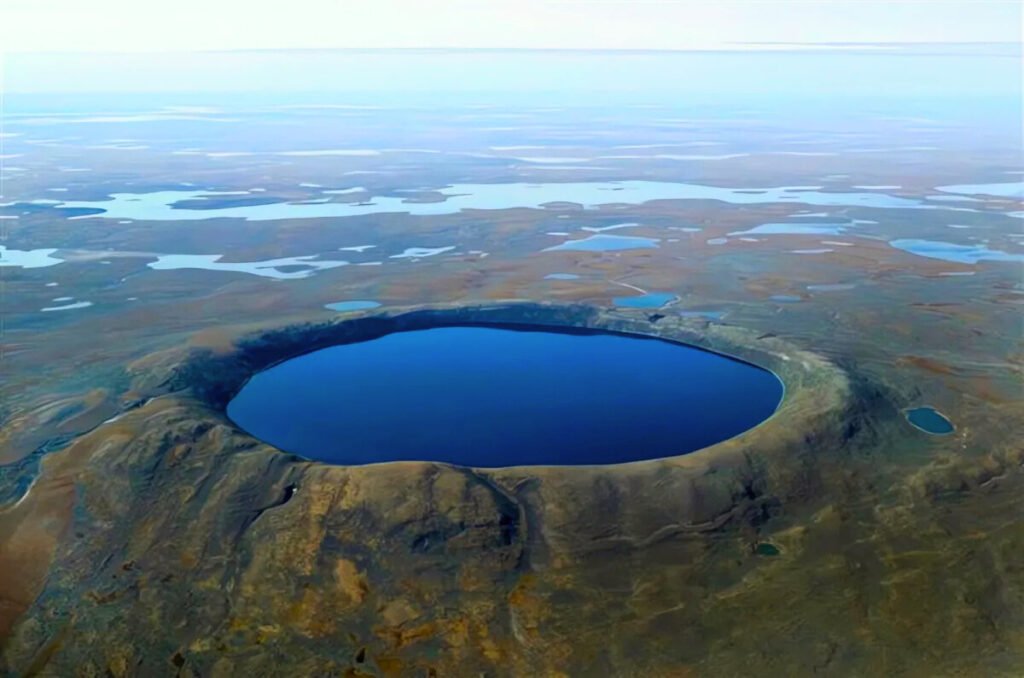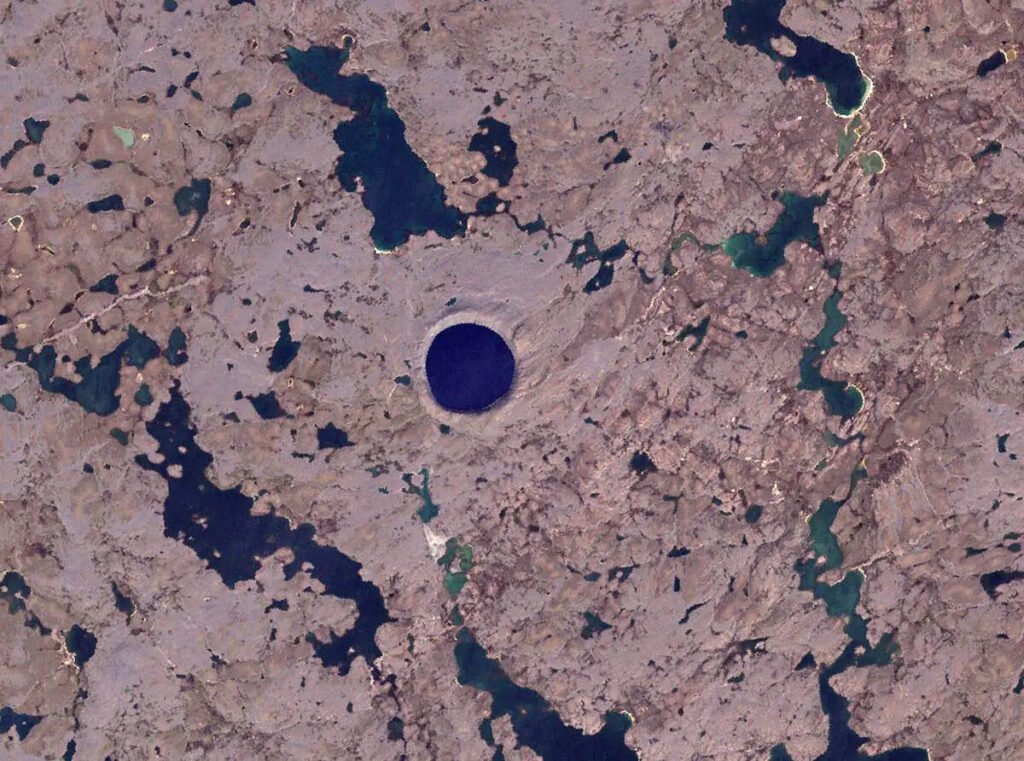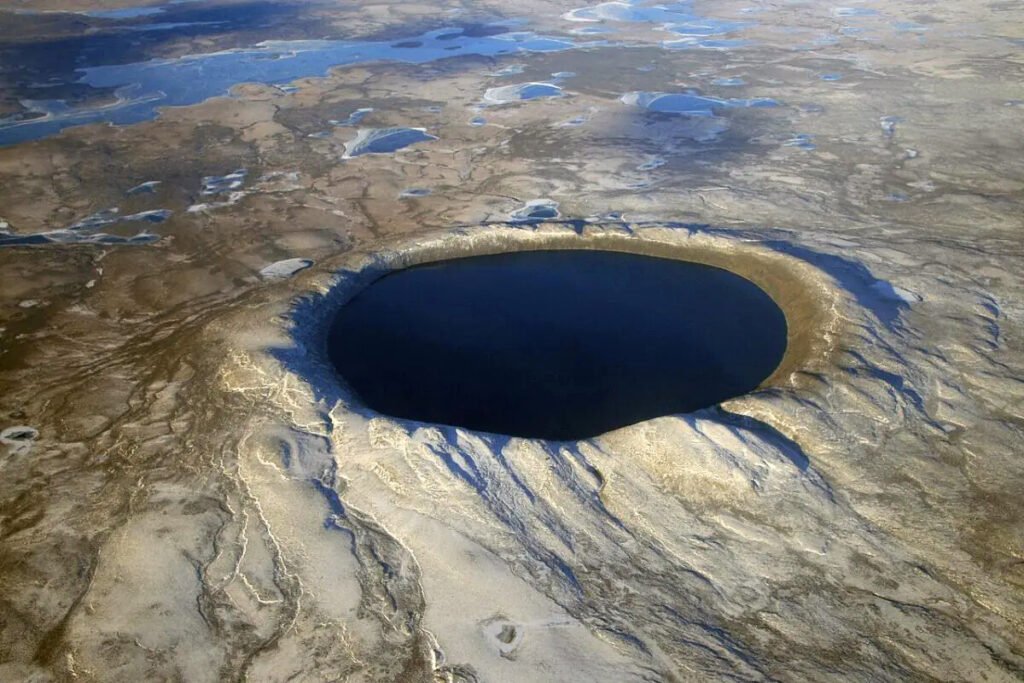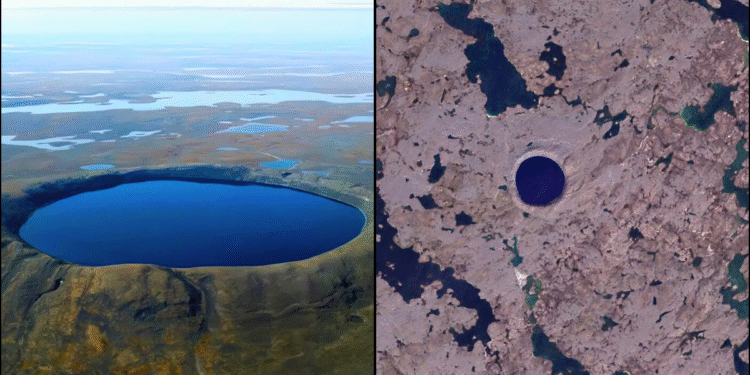Canada’s northern wilderness is home to a rare geological treasure: Pingualuit Crater, a testament to Earth’s cosmic history and the raw power of meteor impacts. Nestled in the remote tundra of Quebec’s Ungava Peninsula, this almost perfectly circular crater holds one of the world’s clearest lakes, Pingualuk Lake. Known as The Crystal Eye of Nunavik, the lake’s crystalline clarity and vibrant blue hue have inspired awe for centuries among the region’s Inuit people.

A Geologically Young Wonder
Pingualuit Crater is geologically young, forming around 1.4 million years ago, making it an invaluable resource for scientists studying impact craters. Unlike older, weathered craters, Pingualuit remains remarkably intact, showcasing the immediate aftermath of a meteorite strike. At 3.44 kilometers (over 2 miles) in diameter and with walls towering 160 meters (525 feet) above the tundra, Pingualuit offers scientists a pristine glimpse into the impact process. The colossal force of a mile-wide nickel-iron meteorite, slamming into the Canadian Shield at 36,000 miles per hour, excavated a massive depression, scattering millions of tons of rock and leaving a kilometer-wide magnetic anomaly still detectable in the bedrock.

The Remarkable Depth and Clarity of Pingualuk Lake
Over time, Pingualuit Crater filled with rainwater and snowmelt, forming Pingualuk Lake, one of North America’s deepest lakes, at an impressive 267 meters (876 feet). Its mineral purity enhances this clarity, with salinity levels less than three parts per million, compared to the Great Lakes’ 500 ppm, making it one of Earth’s purest freshwater bodies. Its purity is so extraordinary that a Secchi disk remains visible to a depth of 35 meters (115 feet), highlighting how untouched this lake is by human and environmental interference.
This near-perfect isolation, untouched by glacial or riverine connections, preserves Pingualuk Lake’s sediments from external contamination, offering scientists a unique archive of past environmental conditions. The lake is home to only one fish species, the Arctic char, whose unique genetic adaptations provide insights into isolated ecosystems and species resilience in extreme northern environments.

A Natural Laboratory for Earth and Beyond
Pingualuit Crater is a natural laboratory for scientists where the impact process, untouched lake sediments, and isolated ecosystems offer invaluable data. In 2007, an expedition led by Professor Reinhard Pienitz extracted sediment cores over 28 feet long from Pingualuk Lake’s bed. These cores contained well-preserved layers of pollen, algae, and insect fossils, presenting a window into over 100,000 years of climate history. Preliminary studies indicate that the sediments capture data from two complete interglacial cycles. Deeper cores could provide an even older record, revealing crucial details about historical temperatures, precipitation patterns, and biodiversity over the last million years, contributing to our understanding of Earth’s climate evolution.

This pristine clarity and isolation also position Pingualuit Crater as a research model for extraterrestrial exploration. Scientists speculate that certain Martian lakes could share similar qualities with Pingualuk Lake, making it a valuable analog for astrobiological studies. Research on microbial life within Pingualuk Lake may inform the search for life on Mars and other extraterrestrial environments.
Adventure and Exploration
Although remote, Pingualuit Crater captivates intrepid travelers willing to undertake the challenging journey. Its striking circular shape, towering crater walls, and ethereal lake create a surreal landscape that reveals nature’s power and beauty. Thanks to its distinct circularity visible from the air, Allied pilots even used the crater as a navigational landmark during World War II. This poetic Crystal Eye of Nunavik has fascinated people long before Western explorers arrived, with the Inuktitut word Pingualuit describing it as a pimple on the tundra.

A visit to Pingualuit Crater offers more than a sight; it’s an encounter with Earth’s ancient history, an experience that underscores the magnificence of our planet’s geological and cosmic story.










